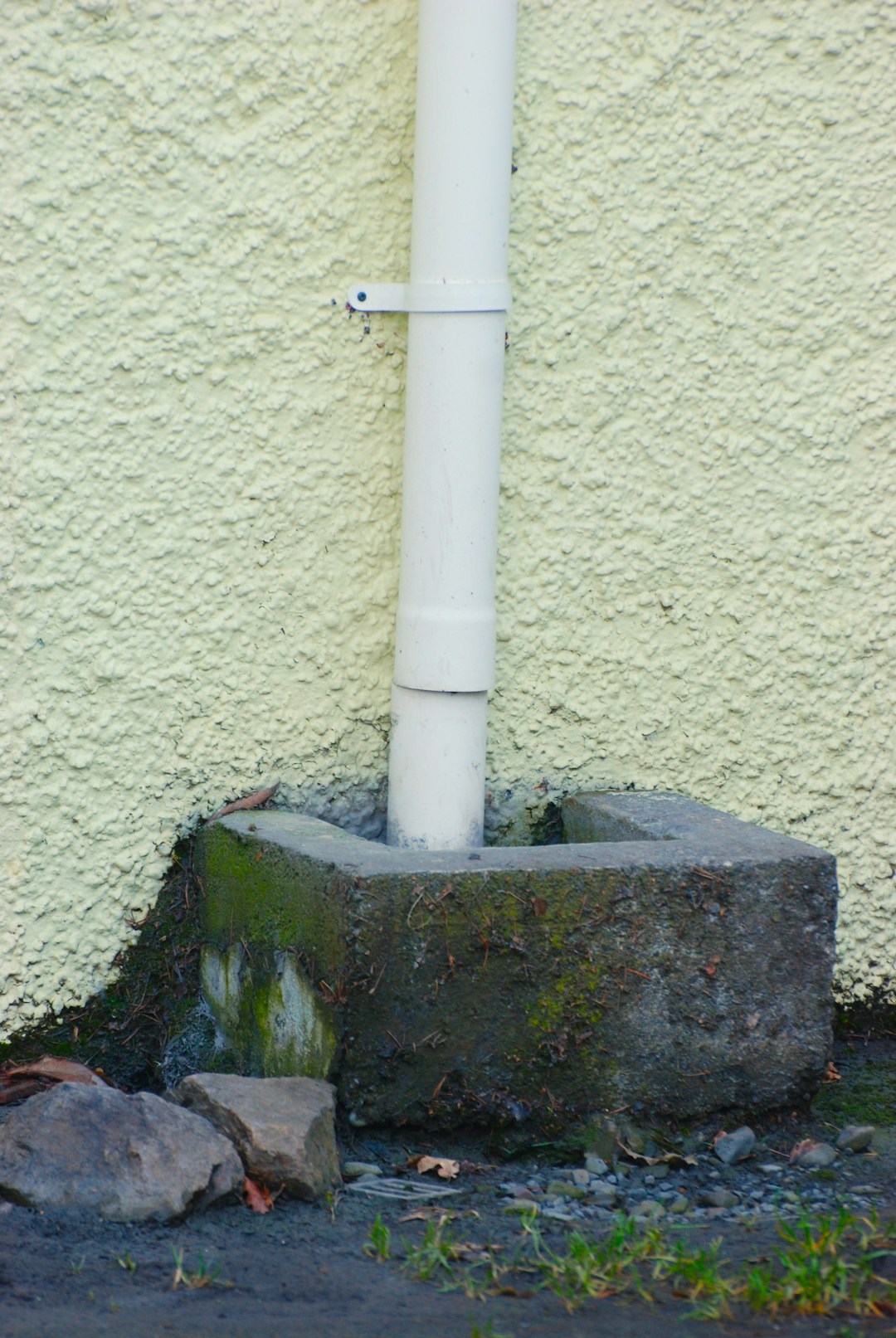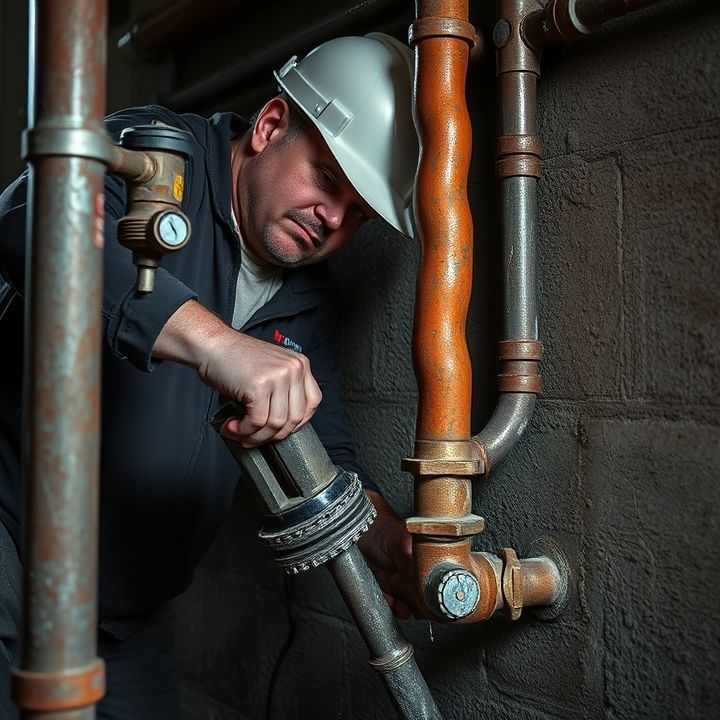Table of Contents
- Introduction
- Worn-out plumbing pipes and the need for plumbing pipe replacement
- Issues with plumbing fixtures and the importance of plumbing fixture installation
- Common plumbing valve repair needs in older homes
- Signs of plumbing emergencies and when to call for plumbing emergency service
- Problems with plumbing drains and the benefits of plumbing drain cleaning
- Aging water heaters and the role of plumbing water heater service
- Sewer line issues and the necessity of plumbing sewer line repair
- Identifying leaks with plumbing leak detection techniques
- Conclusion
- Frequently Asked Questions
Introduction
Owning an older home can be a charming experience, steeped in history and character. However, beneath the timeless beauty often lurk hidden dangers that can wreak havoc on your plumbing system.
From deteriorating pipes to outdated fixtures, older homes come with a unique set of plumbing challenges that can lead to costly repairs and potential hazards.
Many unsuspecting homeowners may not realize the extent of the plumbing issues that may be developing, making it crucial to stay informed about the common problems and their consequences.
In this article, we will uncover the hidden dangers of plumbing in older homes, spotlighting critical issues to watch for and offering valuable insights to help you protect your investment and the safety of your living space.
Join us as we explore the plumbing pitfalls that can unexpectedly disrupt your home and learn how to address them before they escalate.
Worn-out plumbing pipes and the need for plumbing pipe replacement
In older homes, worn-out plumbing pipes are a common issue that many homeowners face. Over time, pipes can corrode, crack, or develop leaks, leading to a host of problems. Aging materials like galvanized steel or lead can deteriorate and pose health risks, while other materials like cast iron may rust and weaken. This deterioration can result in reduced water pressure, discolored water, or even significant water damage within the home.
Replacing worn-out plumbing pipes is essential for maintaining a safe and efficient plumbing system. Homeowners often notice signs such as frequent leaks, mold growth, or unusual sounds when water flows through compromised pipes. Making the decision to replace these pipes can prevent further damage and costly repairs in the future.
Modern plumbing materials, such as PVC and PEX, offer durability and resistance to common plumbing issues, making them ideal replacements. Investing in pipe replacement not only ensures a reliable water supply but also enhances the overall value and safety of older homes.
Issues with plumbing fixtures and the importance of plumbing fixture installation
Older homes often face various plumbing issues related to fixtures due to outdated materials and wear over time. Common problems include leaks, clogs, and corrosion, which can compromise the efficiency of plumbing systems. Fixtures such as faucets, showerheads, and toilets may not function as intended, leading to water wastage and increased utility bills. Furthermore, older fixtures might not meet current building codes, potentially resulting in safety hazards.
The installation of modern plumbing fixtures is crucial for enhancing both functionality and aesthetics. Quality fixtures can significantly reduce the risk of leaks and other plumbing issues while conserving water, which is beneficial for both the environment and the homeowner’s wallet. Proper installation ensures that fixtures operate efficiently, reducing maintenance costs over time. It’s vital to hire a professional plumber for installation to ensure compliance with local codes and standards, which can prevent future issues.
Common plumbing valve repair needs in older homes
Common plumbing valve repair needs in older homes often arise due to the aging infrastructure and the materials used in the original plumbing systems. Valves, which manage the flow of water throughout a home, can corrode, wear out, or become clogged with mineral deposits over time. One typical issue is the deterioration of gate valves, which are commonly used but known for their tendency to get stuck or leak. These valves may require replacement or repair to ensure proper operation.
Another frequent issue involves compression valves that control water flow to faucets and toilets. Over time, the rubber washers inside these valves can wear out, leading to leaks and reduced efficiency. Regular maintenance and timely repairs are essential to prevent water waste and damage.
Additionally, older homes may still have stop valves, which can corrode and become difficult to operate. Addressing these issues promptly can help homeowners avoid costly water damage and maintain a reliable plumbing system.
Signs of plumbing emergencies and when to call for plumbing emergency service
Recognizing the signs of plumbing emergencies is crucial for safeguarding your home from extensive damage. One significant sign is sudden water pooling or leaking in unexpected areas, which may indicate a burst pipe or serious leak. Additionally, a noticeable drop in water pressure could suggest a hidden leak or blockage.
Another alarming sign is the presence of foul odors, which can indicate sewage backups or drainage issues. If you notice gurgling sounds in your drains, this could also be a warning of a blockage that requires immediate attention.
When you encounter any of these issues, it is essential to call for emergency plumbing services promptly. Professional plumbers are equipped to handle urgent situations, such as burst pipes, severe clogs, or sewage backups, which can pose health risks and lead to significant property damage.
Timely intervention can mitigate damage and prevent costly repairs, ensuring your plumbing system functions effectively and safely.
Problems with plumbing drains and the benefits of plumbing drain cleaning
Older homes often experience problems with plumbing drains that can lead to significant inconveniences for homeowners. Common issues include slow draining sinks, clogged toilets, and sewer backups. These problems typically arise from a buildup of grease, hair, soap residue, and other debris in the pipes. Over time, these materials can create blockages that prevent water from flowing freely, resulting in unpleasant odors and potential water damage.
Regular plumbing drain cleaning is essential to maintain a healthy plumbing system. This process involves using specialized tools and techniques to remove clogs and buildup within the pipes. One of the primary benefits of professional drain cleaning is the prevention of future blockages, which can save homeowners from costly repairs. Additionally, clean drains can improve the overall efficiency of the plumbing system, ensuring that water flows smoothly and reducing the risk of leaks. Regular maintenance also contributes to a healthier living environment by minimizing unpleasant odors and the potential for mold growth caused by stagnant water.
Aging water heaters and the role of plumbing water heater service
Aging water heaters are a common plumbing issue in older homes, often leading to decreased efficiency and unexpected failures. These appliances typically have a lifespan of around 8 to 12 years, after which their performance can significantly decline. Homeowners might notice signs such as inconsistent water temperatures, strange noises, or even water discoloration. These issues usually stem from sediment buildup, corrosion, or general wear and tear.
Regular plumbing water heater service is essential for maintaining the functionality and longevity of these systems. This service often includes flushing the tank to remove sediment, inspecting the anode rod for corrosion, and checking the pressure relief valve. By scheduling routine maintenance, homeowners can prevent major breakdowns and ensure their water heaters operate efficiently.
Addressing issues promptly with the help of a professional plumber can also save on energy costs, as older, inefficient water heaters tend to consume more energy. Overall, being proactive about water heater maintenance can lead to a safer and more comfortable living environment.
Sewer line issues and the necessity of plumbing sewer line repair
Sewer line issues are a common concern in older homes, often leading to significant plumbing problems. These issues can arise from various factors, including age, tree root intrusion, and the deterioration of materials. Over time, the sewer lines can become clogged with debris, grease, or even broken sections, making it essential to address these problems promptly.
Ignoring sewer line issues can result in severe consequences, such as sewage backups, unpleasant odors, and even damage to your home’s foundation. To avoid these costly repairs, homeowners should be vigilant and recognize the warning signs such as slow drains, gurgling noises, and wet spots in the yard.
Plumbing sewer line repair is crucial for maintaining the health of your home’s plumbing system. Regular inspections and maintenance can help identify potential problems before they escalate. Moreover, using advanced technology, such as video camera inspections, can provide a clear view of the condition of your sewer lines, informing necessary repairs. Investing in timely sewer line repairs ensures your plumbing system remains functional and reliable.
Identifying leaks with plumbing leak detection techniques
Identifying leaks in plumbing systems is crucial for maintaining the integrity of older homes. Several leak detection techniques can help homeowners pinpoint issues before they escalate. One common method is the visual inspection, where homeowners check for any visible signs of water, such as damp spots on walls or ceilings, mold growth, or pooling water around fixtures.
Another effective technique is the use of water meter monitoring. By regularly checking the water meter, homeowners can identify unusual changes in water usage that may indicate a hidden leak. Additionally, acoustic leak detection involves using specialized equipment to listen for the sound of water escaping from pipes, which can be especially effective in locating leaks within walls or underground.
Thermal imaging is another advanced technology that allows for the identification of leaks by detecting temperature variations on surfaces, revealing locations where water may be present. Lastly, smoke testing can also be employed to identify leaks in drain systems by introducing smoke to see where it escapes. Each of these methods provides valuable insights for homeowners looking to address plumbing problems efficiently.
Conclusion
In conclusion, addressing plumbing issues in older homes is crucial for ensuring safety, efficiency, and comfort. From worn-out pipes to aging water heaters, recognizing the hidden dangers can save homeowners from costly repairs and potential health hazards. Regular maintenance, timely repairs, and upgrading outdated fixtures are essential steps in safeguarding your plumbing system. Don’t wait for minor issues to escalate into emergencies; proactive measures can make all the difference. If you suspect any plumbing problems in your home or need professional assistance, don’t hesitate! Call 573-555-2121 today for expert plumbing help and ensure the integrity of your home’s plumbing system. Your peace of mind is just a phone call away.

